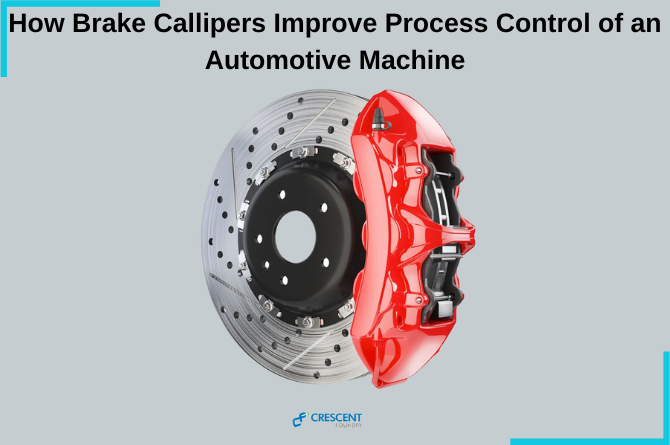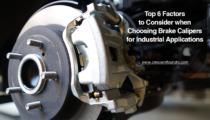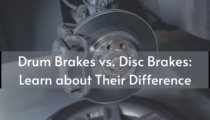Brake callipers are essential components in industrial machinery, as they…

How Brake Callipers Improve Process Control of an Automotive Machine
Automotive machines need a proper braking system in order to maintain normal and safe functioning. Brakes help bring the automotive machines (mostly vehicles like cars) to come to a halt as well as de-accelerate. Initially, brakes were designed for slowing down horse carriages or vehicles with wheels, with steel rims. Such brakes were made of wood and controlled by a lever. However, with the increasing speed of cars, a better automotive brake system was introduced. The newer system comprises several parts including callipers, rotors and hydraulic fluid source. Today, brake calliper manufacturers in India offer brake callipers of several sizes, material and designs to improve the control of an automotive machine.
How do Brakes Operate?
Brakes function on the principle of friction to bring any object to a halt. When the brake is applied, parts of the brake engage the pads against the disc rotor, causing friction and reduced acceleration. This brings the vehicle to slow down and then ultimately pause. Brake callipers suppliers in India offer several configurations according to the requirements.
Function of Brake Calliper
An essential role is played by the brake calliper system in automotive disc brakes. Fitted like clamps on the disc rotors, these structures have paddings inside. Brake callipers make use of force to squeeze the pads onto the surface of the rotor. Upon the application of brakes, the calliper assembly receives high pressure hydraulic fluid from the brakes master cylinder. It is the fluid which causes the pads to push against the disc rotor.
Cushioned rubber bellows allow movement of the callipers in order to provide flexibility to push on the opposite side when the vehicle has stopped. The friction converts the kinetic energy into heat energy, causing the vehicle to stop. Good brake disc manufacturers design the rotors in such a way that the energy is dissipated across the plate as well as let out through the holes. It is also important to select the right size brake disc for industrial applications for a better and safer experience.
Types of Callipers
Brake calliper manufacturers in India offer two types of callipers─ fixed and floating. Although both serve the same purpose and function, fixed callipers have an edge over floating calliper designs.
Fixed calliper designs have pistons attached to both sides of the clamp-structure. When the brakes are applied, pistons from both sides press against the rotor, causing friction. However, floating callipers move, when there is force from the rotor end. Fixed callipers are ideal for high performance applications while floating callipers are commonly used in smaller and lighter applications, like trucks and passenger cars.
How do Callipers help Improve Brake Performance?
The quality and performance of brake callipers impact the braking efficiency. Particularly for high speed automotives, brake performance is crucial to ensure safety and maintain functionality. The build, quality and the efficiency of the callipers influence the braking performance. To boost the braking, the piston area can be increased. With more area exerting pressure on the rotor, the force will increase, thereby increasing the braking capacity.
When Should Brake Callipers be Replaced?
Brake callipers are designed to be highly resistant and durable, considering the extent of the exhaustive work they perform. Hence, they are built to withstand years of wear and tear. Yet, there are certain situations where the callipers must be replaced.
- Fluid Spillage – When the hydraulic fluid that makes the callipers function starts to leak, causing spillage. This can be caused by the melting or removal of the rubber stoppers that prevent leakage. It comprises the pressure that needs to be created in order to apply the brakes properly, thus needing replacement.
- Unnatural Sounds from the Brakes – Squeaking and grinding noises from the brakes can indicate a misplaced part or parts that have melted due to heat and pressure.
- Reduced Brake Power – Very naturally, braking should feel like a jolting force or at least a resistance in the opposite direction. However, if the resistance is not felt, then there is definitely a problem with the callipers.
- Warning Lights – When the warning lights turn on for the anti-lock braking system, it is an indicator of liquid spillage.
- Vibration When Brakes are Applied – A well-functioning brake system should be resisting yet smooth in application. If a vibration is felt, it can mean that the rotor surface has become irregular. Thus, when the callipers push against the discs, the surface is uneven and therefore, there is vibration before pausing.
Since callipers are an essential component of the braking system, regular checks and maintenance is essential to keep them functioning smoothly. Besides, only reputed brake callipers suppliers in India like Crescent Foundry can keep the quality standards as well as offer adequate maintenance facilities catering to highest process control of an automotive machine.





